July 2024
The first thing that comes to mind for many when speaking of Liverpool is The Beatles. But Liverpool is so much more. The city is located on the eastern side of the Mersey Estuary (Think Gerry and the Pacemakers) adjacent to the Irish Sea and is approximately 178 miles from London.
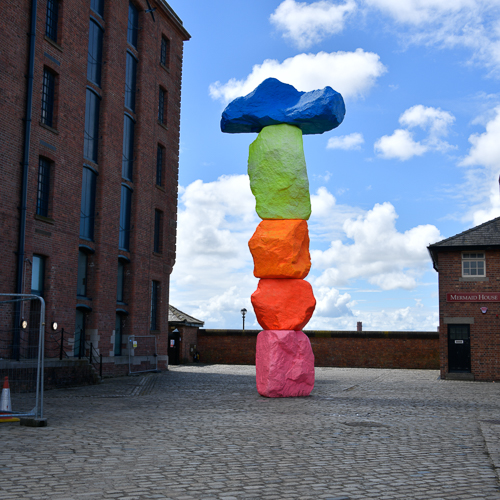
Liverpool Mountain, Ugo Rondinone in Mermaid Courtyard at the Royal Albert Dock complex.
Liverpool was established in 1207 and became a significant town in the late seventeenth century when the port at nearby Chester began to silt up. The Port of Liverpool became heavily involved in the Atlantic slave trade, with the first slave ship departing from the town in 1699. The port also imported much of the cotton required by the neighboring Lancashire textile mills of Manchester.
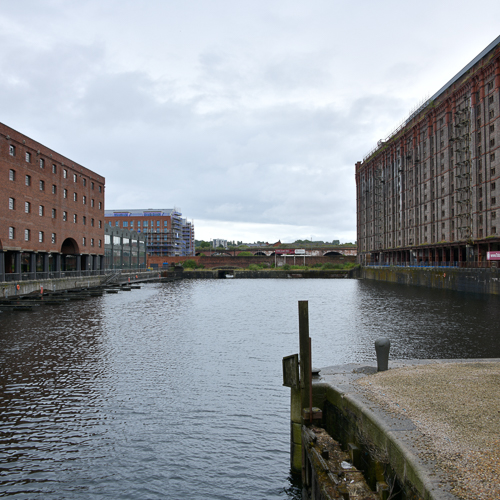
The Tobacco Warehouse is on the left, and the Stanley Dock is on the right on the Leeds and Liverpool Canal.
The Stanley dock is one of five docks opened on August 4, 1848. Stanly dock, built by James Hartley, 1844-58, is considered the most impressive
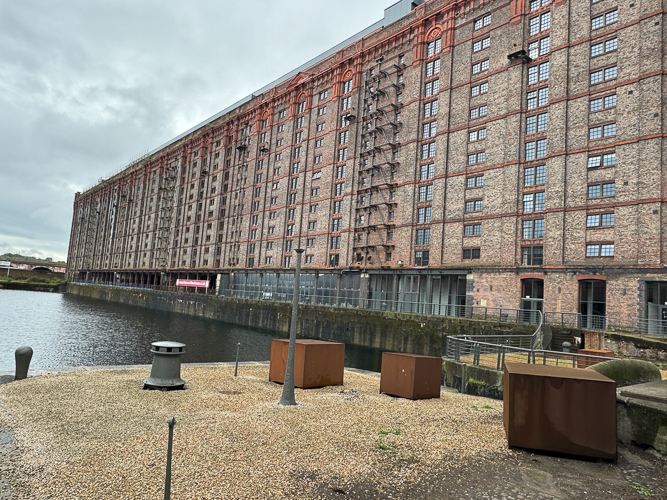
Stanley Dock
The Stanley dock is the only one in Liverpool built inland, all the others being built out from the foreshore. The warehouses were five stories, with an area of 12,000 square yards. Part of the northern quay warehouse was demolished after sustaining damage in an air raid during the Second World War. Between 1897-1901, the southern part of the dock was filled in to build the Tobacco Warehouse, designed by Anthony George Lyster, the largest brick warehouse in the world.
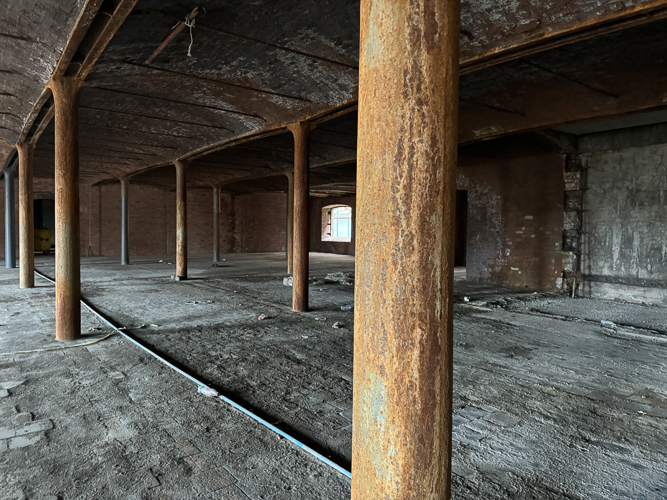
Inside the Stanley Dock looking at its massive iron pillars and stunning brick archways.
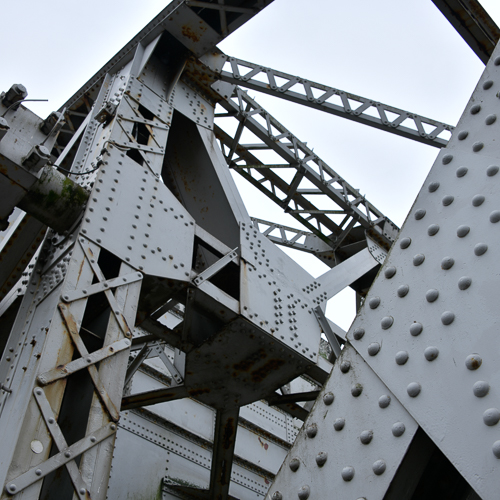
Looking up while standing on the Stanley Dock bridge.
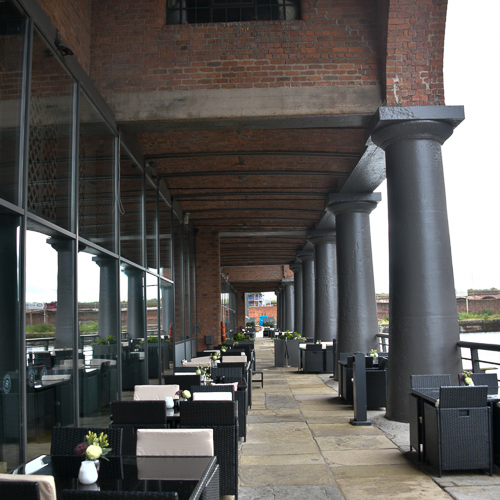
Tobacco Warehouse has been rehabbed into The Titanic Hotel
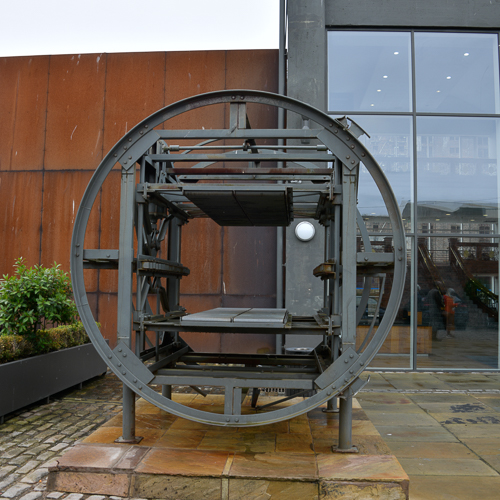
A machine used to package rum
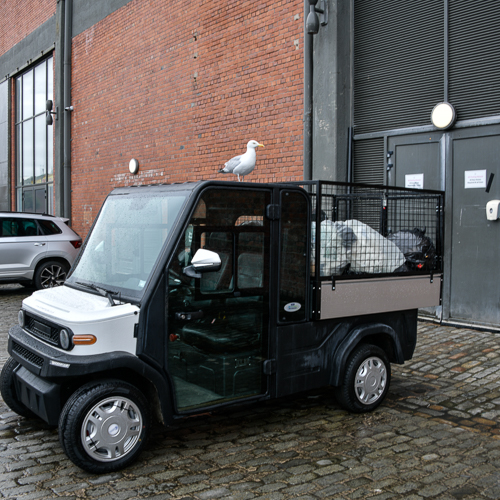
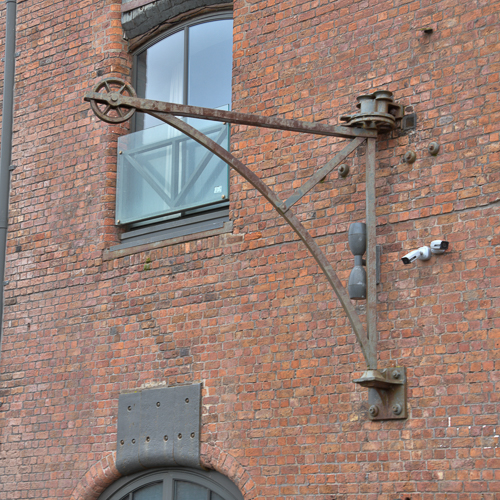
Hoists to help lift items to the upper floors of the warehouse
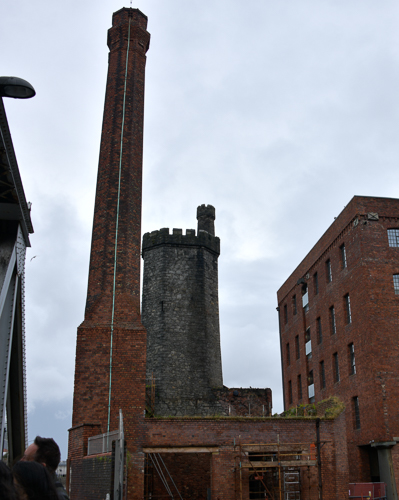
*
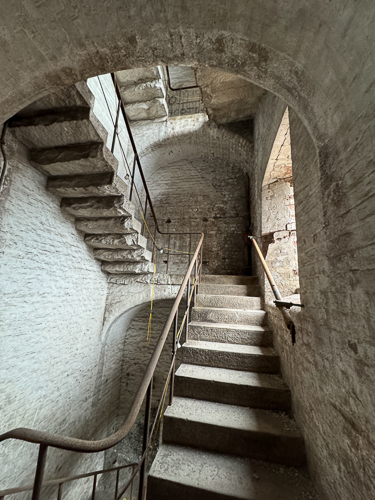
Granite stairs inside the Stanley Dock
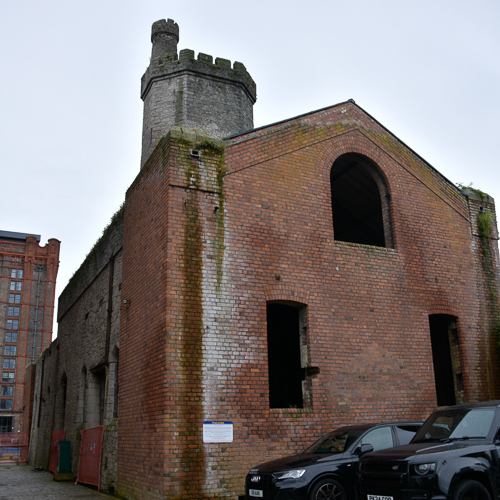
Royal Albert Dock
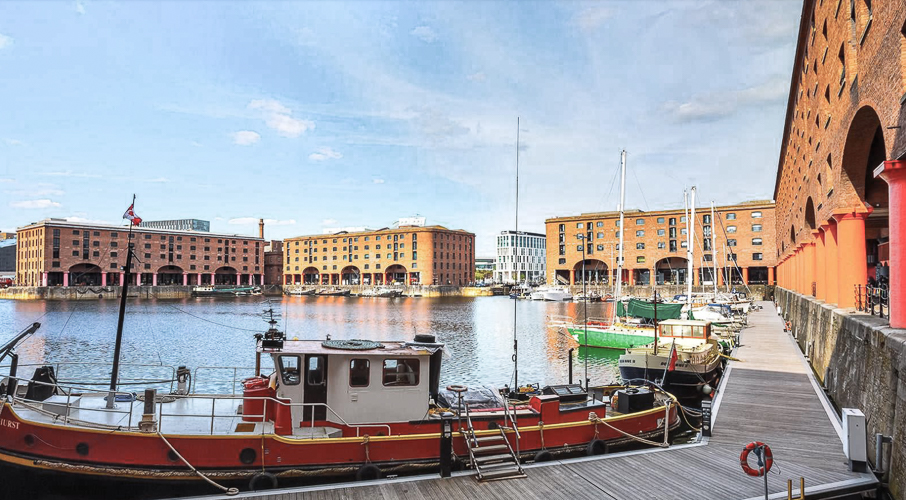
The Royal Albert Dock
The Royal Albert Dock is a complex of dock buildings and warehouses designed by Jesse Hartley and Philip Hardwick. Opened in 1846, it was the first structure in Britain to be built from cast iron, brick, and stone, with no structural wood. As a result, it was the first non-combustible warehouse system in the world. Today, it consists of restaurants, shops, and museums.
The canal system and its docks were what made England England. When one looks at them today, abandoned, rehabbed into hotels or kitsch, it is difficult to imagine that without them, England would not be England.